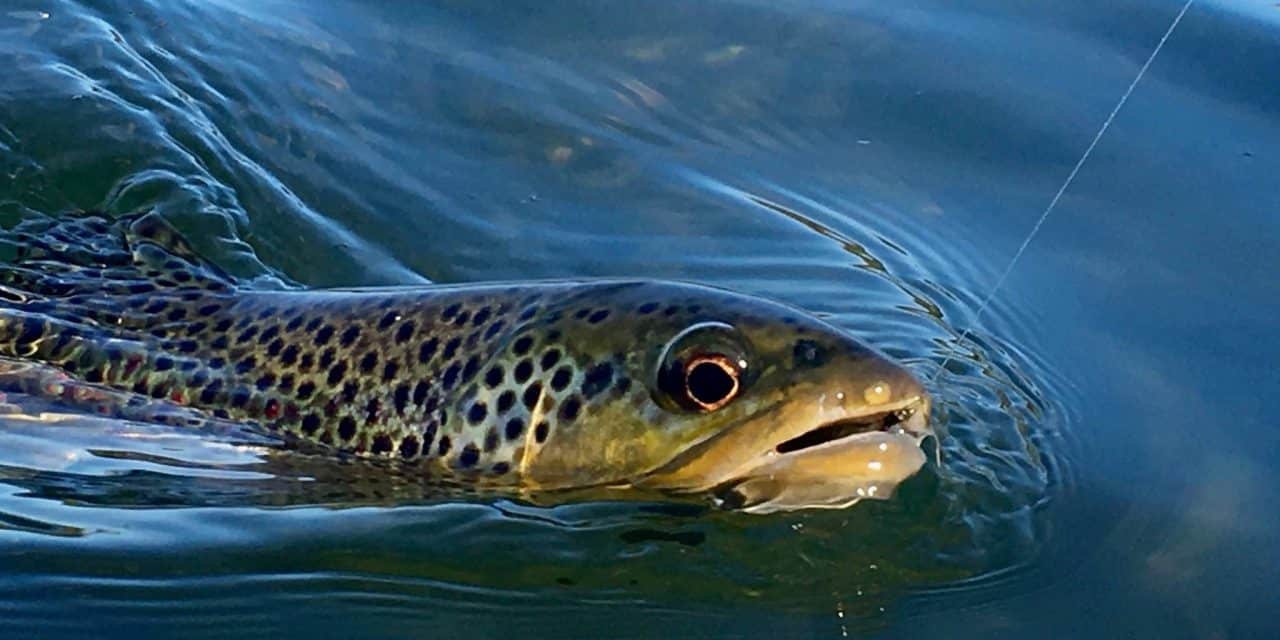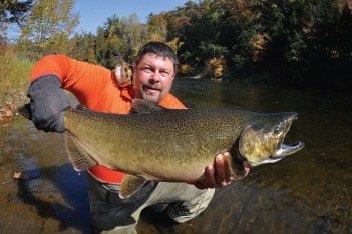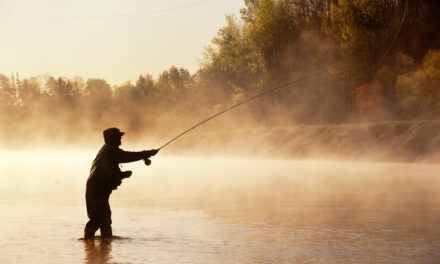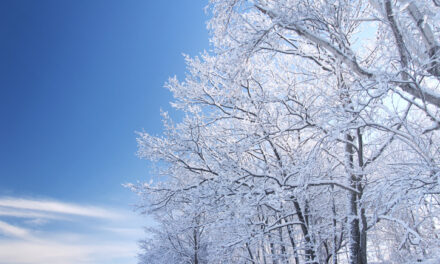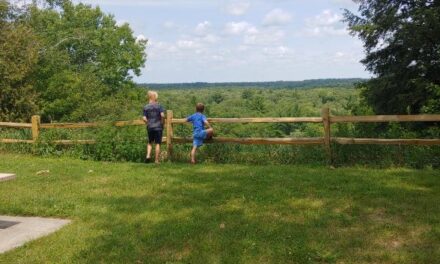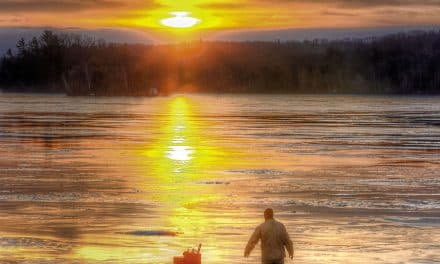Newaygo County teems with an abundance of water for the experienced or casual fisherman. Thousands of acres of dam-supported backwaters, large and small beautiful lakes, and even hidden ponds provide plenty of opportunity for anglers to enjoy still-water fishing.
But what draws most fishermen to our area are a couple of rivers containing miles of some of the best trout and salmon fishing east of the Mississippi River. The northern part of the County provides the headwaters of two famous rivers: the Pere Marquette which takes a westerly route to Ludington and Lake Michigan, and the White River which provides miles of brook and brown trout fishing from its headwaters to the dam in Hesperia.
The White River Hesperia dam prevents the anadromous salmon and steelhead from reaching the upper spawning redds of the brook and brown trout. Brook trout fishermen will do well morning and evenings. The more nocturnal brown trout will feed into the nighttime hours. A flood in September of 1986 destroyed the dam in White Cloud and took Lake White Cloud and its fish down-stream. The ten or more miles of river below White Cloud now contains a sizeable population of warm water fish as well as the trout that populated the river before the flood.
Mother Nature blessed the citizens of Newaygo County and its visitors with one of Michigan’s gems…the Muskegon River. One of Michigan’s longest rivers, its source comes from Houghton Lake, located in the central part of the “Mitten”. The river begins as a warm water fishery; by the time it reaches Newaygo County several incoming springs feed its cool waters. When the river clears its last impoundment, Croton Dam, it’s a “born again” trout stream. Now the water above the dam encourages the pursuit of bass and northern pike. The rapidly flowing water below the dam invites the angler to cast for trout.
Early fall continue the pursuit of smallmouth bass in the lower waters of the Muskegon – below Newaygo – with anglers casting streamers or spinners while keeping a wary eye out for the first chinook salmon of the season. The movement of the salmon to reach their spawning redds – between mile markers 1 and 20 below Croton Dam – occurs in September and runs into October depending on water conditions and temperatures. The river can be waded in certain locations but for the most part it is best challenged from a boat.
Visiting fishermen do well to contact local guides to become acquainted with the river. The County boasts many expert guides. Click here to find a list of guides.
If you are fortunate to fish our local waters you will be blessed by the beauty and clarity of the waters as well as the wildlife that abounds in the presence of the rivers. Don’t let the opportunity pass you by.
Jim Helgemo
A Magical Outdoor Wonderland
The forests and rivers of Newaygo County are a magical outdoor wonderland where nature is on display year-round. The dense Huron Manistee National Forest, the rivers, lakes and streams -- all spring fed, produce some of the most amazing trout, steelhead, and salmon...

